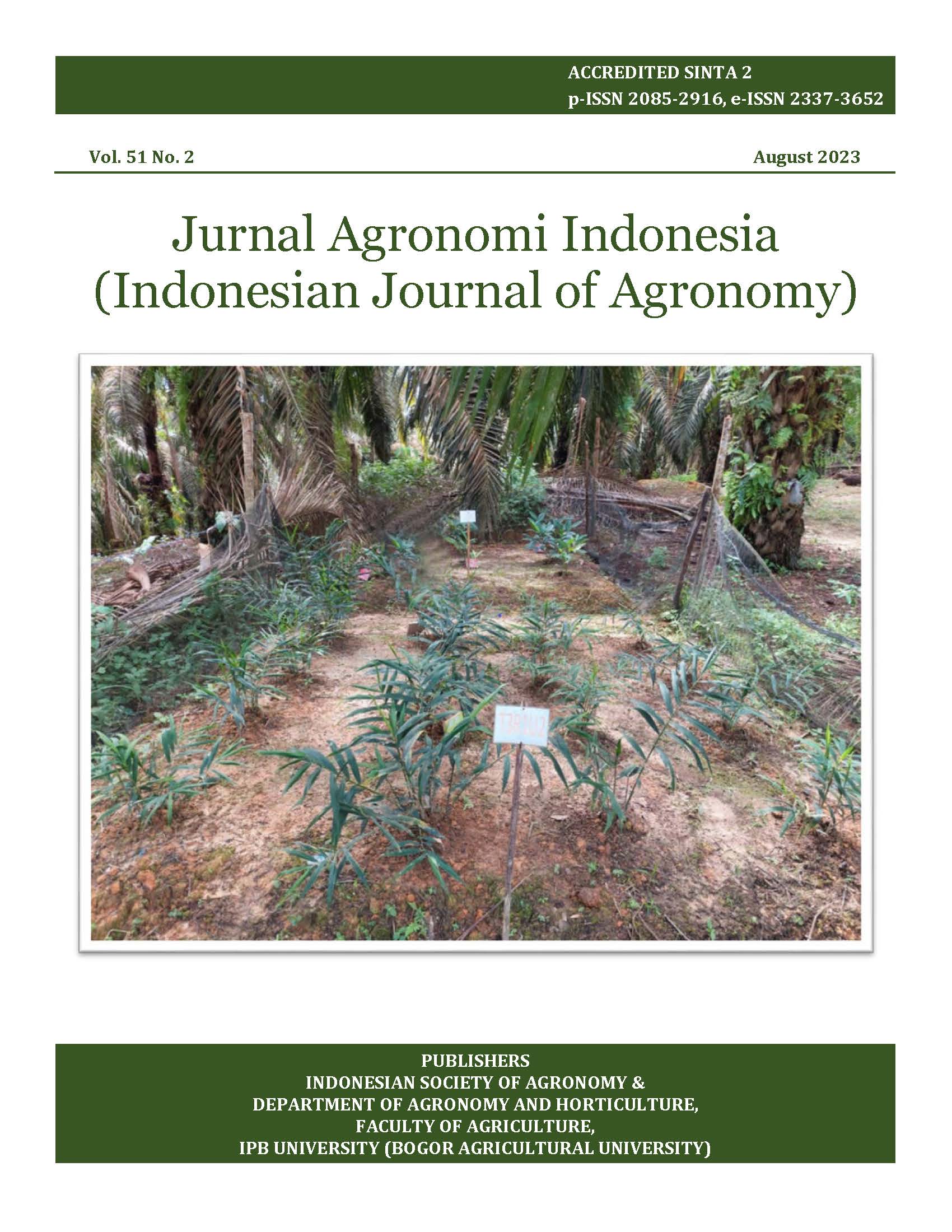Growth and yield of rice from mycorrhizal enrichment seedlings on different soil water content
Abstract
The growth and yield of rice in limited soil water are expected to increase through the application of mycorrhizae due to the increasing root ability to absorb water and nutrients from the soil. The study aimed to determine the role of mycorrhizae on the growth and yield of rice plants in different soil water content. The study was conducted in Mempawah District, West Kalimantan, in February-June 2022. The experiment was arranged in a split-plot randomized complete block design with main plots of mycorrhizae treatment on seedlings (without and with mycorrhizae application), and subplots of soil water content (100%, 80%, 60%). The results showed that mycorrhizae could colonize 60-80% of roots and increase phosphorus absorption at up to 60% of soil water content. Application of mycorrhizae improved plant growth up to 80% of soil water content for the maximum number of a tiller, and 60% of soil water content for the leaf area. Mycorrhizae performed better to increase yield at up to 80% soil water content on the number of productive tillers and grain index of 1,000 seeds, and it performed better at a soil water content of 100% for grain weight per hill.
Keywords: microorganisms, plant resistance, rice production, root colonization













